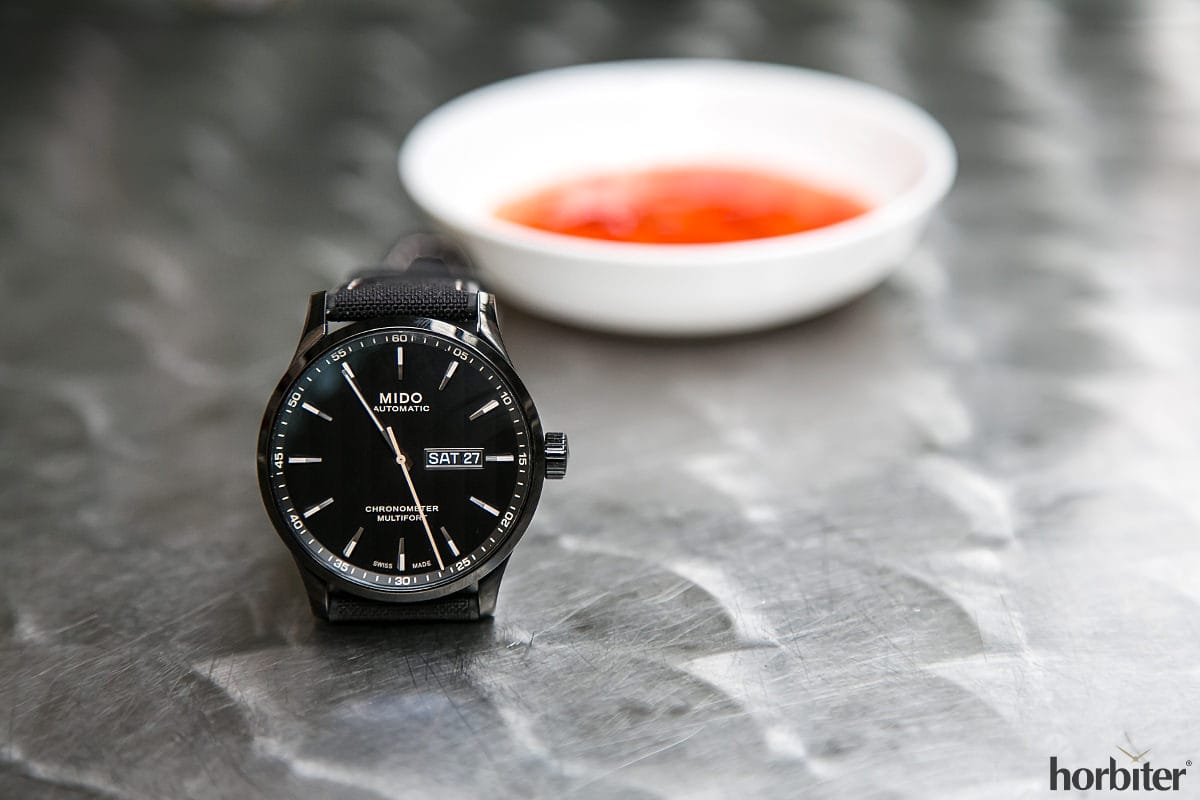Do you still remember how expensive it was to buy, a few years back, a watch with a Chronometer certificate? Forget about it because the COSC brand has officially left the luxury sector to join a world of much more accessible products.
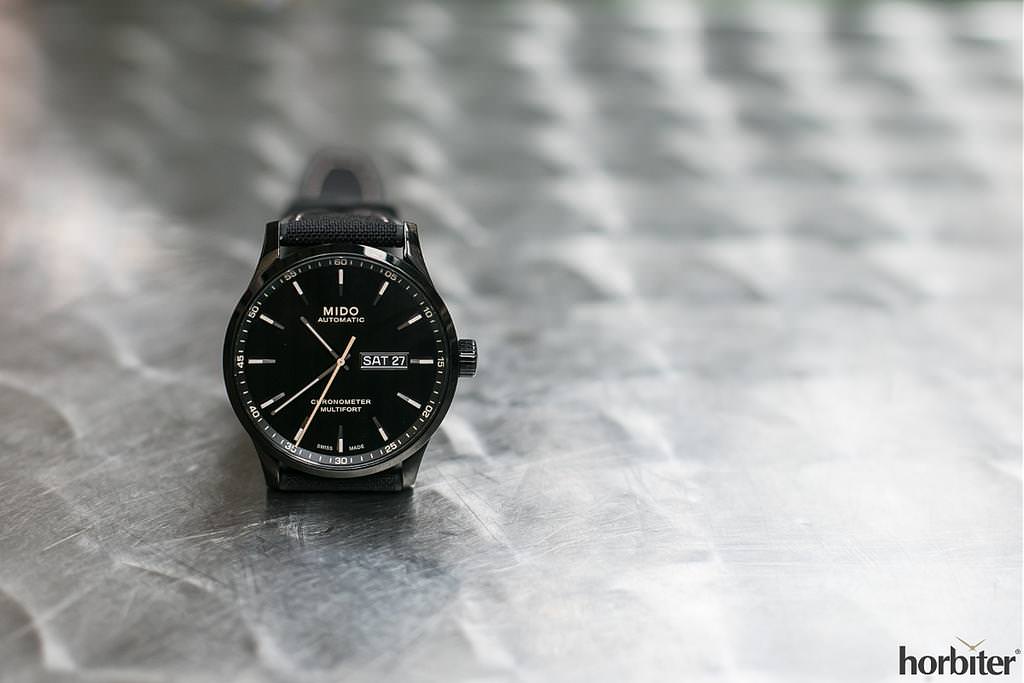
Some consider this certification to be obsolete (and perhaps it always was because it focused on the uncased movement), even before the METAS certification made its debut that lowered the COSC certification’s appeal and made it inevitably more accessible. Despite all a movement that is Chronometer certified is still more valuable and precise than the same movement without that specific certification.
The Mido Multifort Chronometer1 is the first Chronometer certified Multifort in the history of the brand.
The Multifort is by far Mido’s most popular collection, it is easily recognizable in modern times for its black PVD–treated steel case, its Côtes de Genève dial and the round indices mixed with the elongated indices placed at 3, 6,9, and 12 o’clock.
The more familiar and the first watch of this collection was the chronograph-special-edition/" target="_self" rel="noopener">Multifort Chronograph Limited Edition the first chronograph of the brand I wrote about, followed by chronograph-adventure-hands-on-photos-price/" target="_self" rel="noopener">a long series of two-register-chronos and several time-only versions, such as the Escape series with its Horween leather strap.
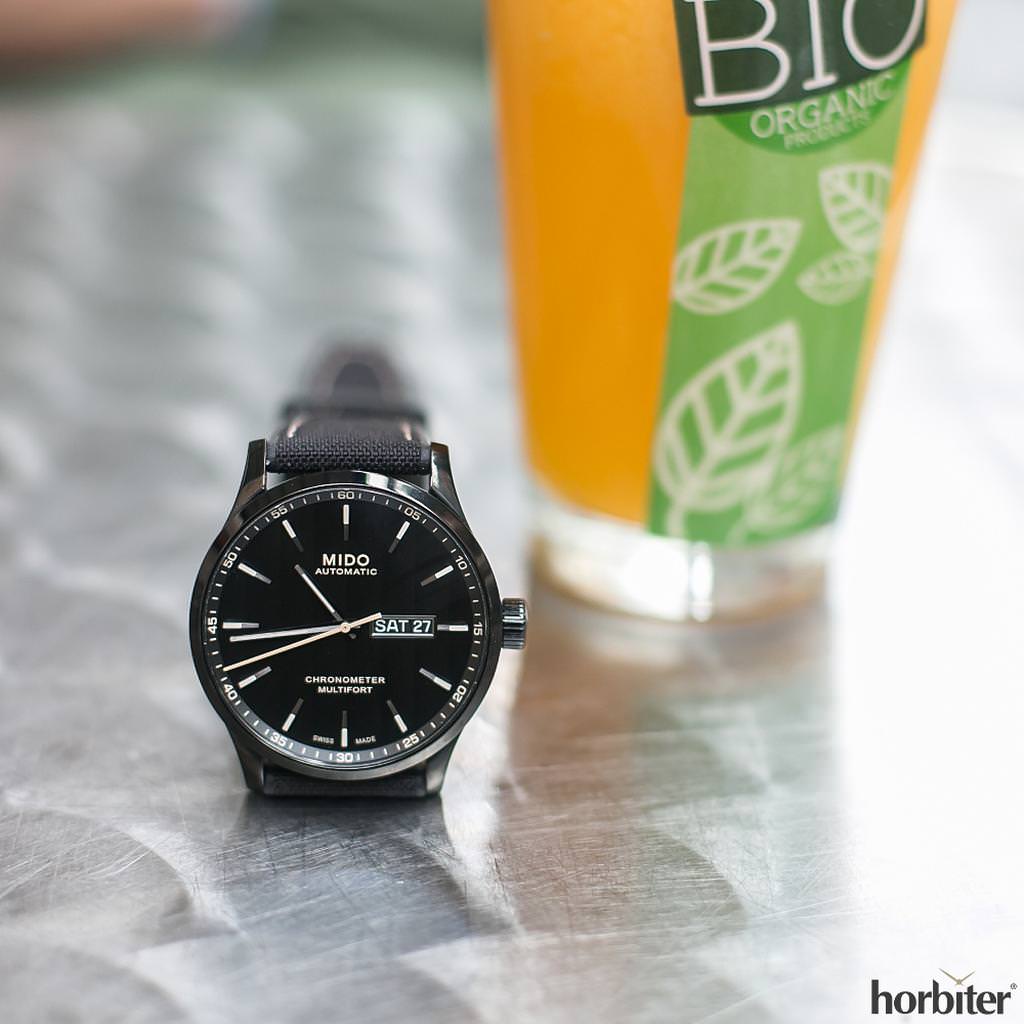
If we exclude the Multifort Datometer, which is the re-edition of the original watch issued for the brand’s centenary, the Multifort is identifiable mainly as a sports watch with Côtes de Genéve decorations on the dial. Mido’s technical and aesthetic evolution in recent years also affected the Multifort collection and the Multifort Chronometer1 is the current arrival point of a design strategy that aimed to lighten up aesthetics from a formal point of view and to enhance the performance of the watch itself from a technical point of view.
It is simpler but richer too.
After many versions (a bit too many to be honest because they confuse you) Mido paved the way for a new path with its Multifort Chronometer1. The Côtes de Genéve motif is an unavoidable element, but the same cannot be said of the original dial that lost its big indexes and gained twelve thin applied indexes all identical to each other and partially filled with cream-colored SuperLuminova® like the hands and the central seconds hand.
It’s a mix that works quite well also because the black dial creates beautiful shadows when exposed to artificial light sources with a predominant yellow tone that match the cream-colored lume.
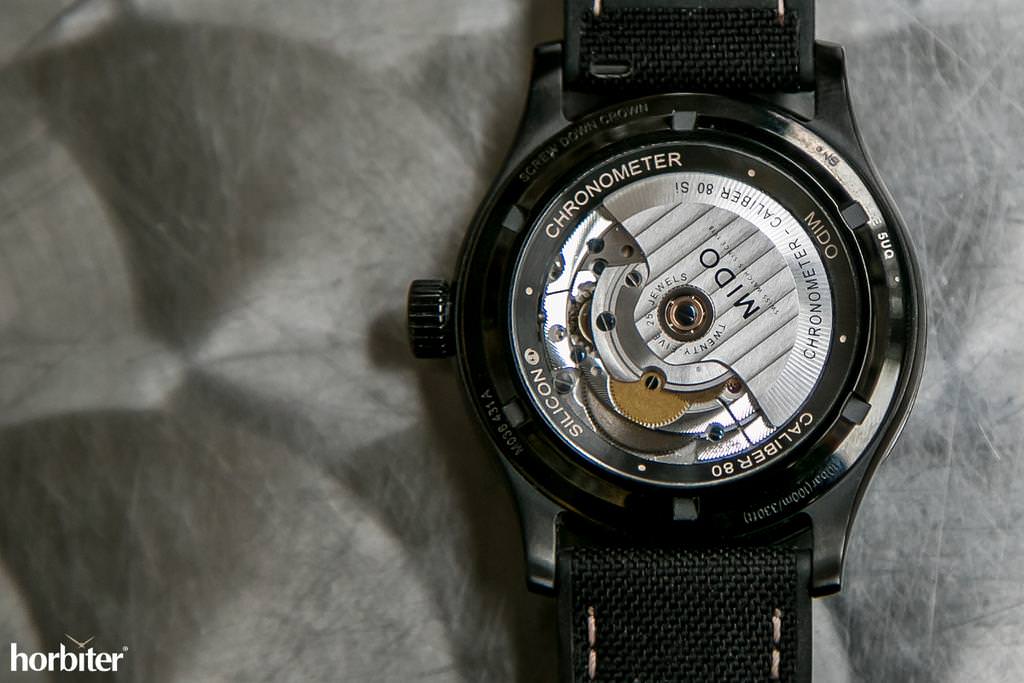
This is a pleasant, but historically difficult effect to capture using a camera. The general perception is that of a premium watch for finishes and technical specifications that are, among other things, appearing in a large font on the transparent case-back, where the designers created a rehaut around the movement.
The caliber’s main characteristics are 80 hours of maximum power reserve, a Chronometer certification and a silicon spring coil – making therefore the power reserve longer than three days – a certified running accuracy and reliability (and a good dose of magnetism resistance too).
The rubber and fabric strap.
When we received the Mido Multifort Chronometer1 to start our photo sessions we were positively impressed by the crafting of the strap. Given that I am a big fan of straps with a tang buckle, I found the mixed crafting in black fabric and rubber with contrasting ecru finishes quite original.
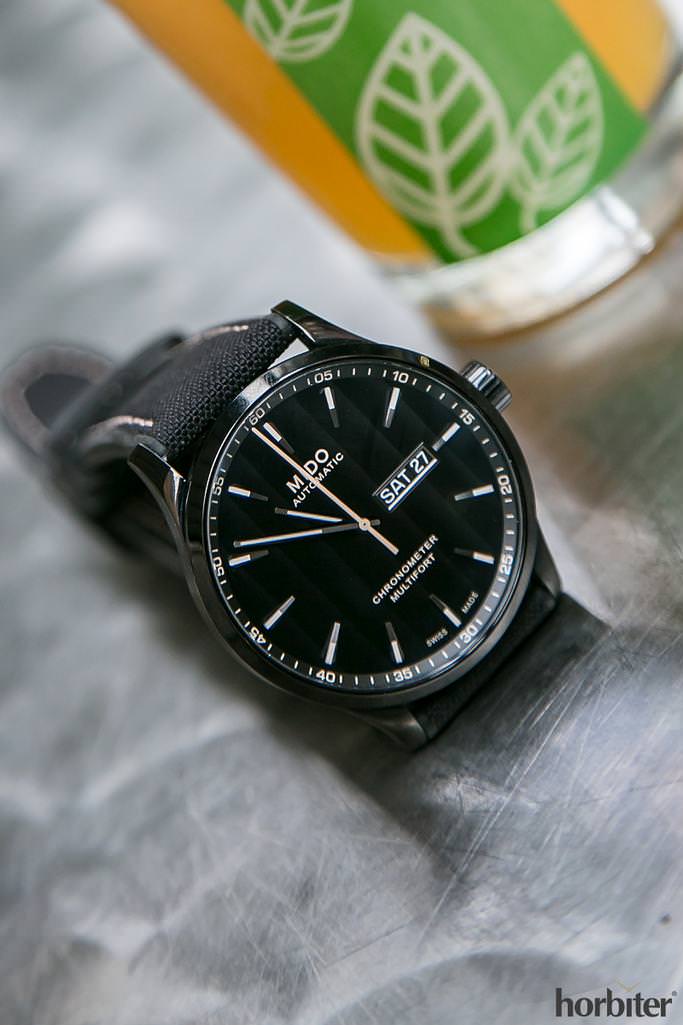
The rubber part and the fabric part alternate each other, but in an asymmetric manner; the rubber part is applied to the lower external part of the strap, and is in contact with the skin on the other half. Curiously, on the external rubber part where the Mido logo is hot foil stamped, the model’s reference is printed immediately above.
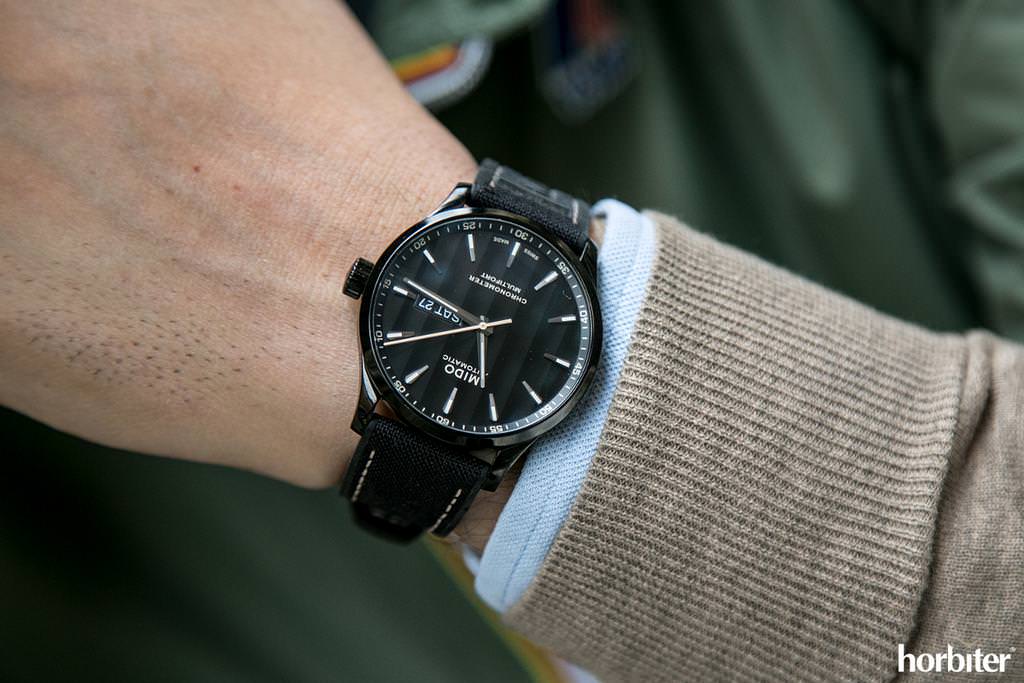
I think it’s the first time that I have seen a reference printed on the strap in such an marked manner, and I think that, at this point, it must be a way to easily identify the strap in the factory and in the after sales process too. However, I would shrink the size of the rubber part and of the Mido writing that I find excessive if compared to the general design of the dial that is very well-balanced and pleasant.
The Mido Multifort Chronometer1 costs € 1,220; a higher retail price than that of a date-caliber-80-watch-hands-on-horbiter/" target="_self" rel="noopener">Baroncelli Big Date and of an Ocean Star, a retail price that, once again, confirms the importance of Mido‘s most important collection.
(Photo credit: Horbiter®)
Gaetano C @Horbiter®
Instagram – Gaetano Cimmino
